



ORGANS OF PARIS © 2024 Vincent Hildebrandt HOME ALL ORGANS
Versailles, Cathédrale
Saint Louis
4 place Saint Louis, 78000 VersaillesOrgue de tribune OdC >
1761 - François-Henri Clicquot1829 - Louis-Paul Dallery
1840 - John Abbey
1863 - Aristide Cavaillé-Coll1961 - Beuchet-Debierre
1987 - Théo Haerpfer
2018-21 - Lacorre & MuhleisenIII/46 - mechanical traction - stoplist

The organ was built by François-Henri Clicquot in 1759-
1761 (45 stops and 4 manuals and a pedal with a 'grand
ravalement').
1829: Maintenance by Louis-Paul Dallery (addition of a
Bombarde at the GO).
1840: Maintenance by John Abbey (new wind supply).
1863: Renovation by Aristide Cavaillé-Coll: deletion of the
fourth manual, addition of a Swell with 8 stops,
replacement of several mutations and mixtures by
'symphonic' stops on the other manuals (a Gambe and
an Unda Maris on the Positif, a Gambe and a Salicional
on GO), a Barker machine for the GO, several 'pédales de
combinaisons', extention of winchests from 50 to 54
notes for each manual and renovation of the wind supply
applying various pressures.
In the first half of the XXth century, works were carried
out by Mutin, Bossier and Costa-Duval.
In 1961, a restoration was performed by Beuchet-
Debierre: extension of manuals to 56 notes, installation
of a new 30-note pedalboard, repositioning of the swell
pedal, using a toespoon, from the extreme right to the
middle of the console. On the Grand-Orgue, a poor
Quinte, not from Clicquot nor from Cavaillé-Coll, was
replaced by a new one, and a 4' Flûte replaced the
second 4' Prestant (which was relocated on the Swell). On
the Positif. Gambe and Unda Maris stops were replaced
by a 4' Flûte douce and a 1 3/5' Tierce, and a 1 1/3'
Larigot was added. An additional winchest was built for
the Swell to house the following stops: 8' Principal, 4'
Prestant, 2' Doublette, and Plein-Jeu.
In 1987 a thorough restauration was carried out by Théo
Haerpfer (Manufacture Lorraine de Grandes Orgues),
restoring the creation of Cavaillé-Coll in 1863.
A new restoration by Lacorre & Muhleisen will be ready mid-
2024.
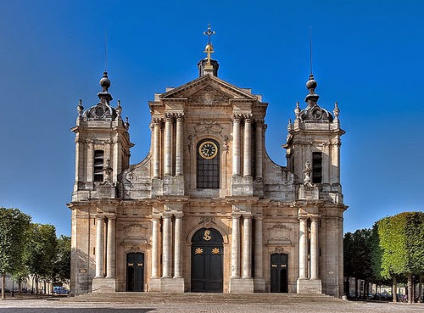
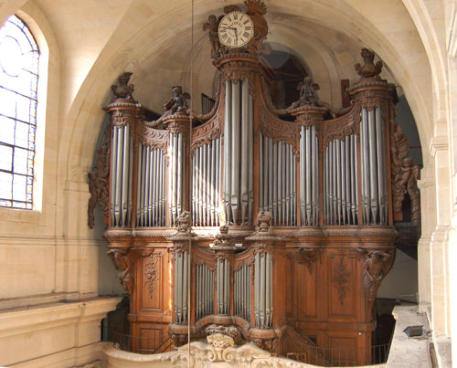
Organs of Paris
Versailles,
Cathédrale
Saint Louis
4 place Saint Louis, 78000 VersaillesOrgue de tribune OdC >
1761 - François-Henri Clicquot1829 - Louis-Paul Dallery
1840 - John Abbey
1863 - Aristide Cavaillé-Coll1961 - Beuchet-Debierre
1987 - Théo Haerpfer
2018-21 - Lacorre & MuhleisenIII/46 - mechanical traction - stoplist
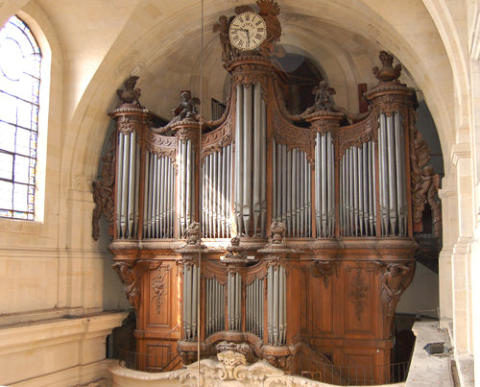
ORGANS OF PARIS © 2024 Vincent Hildebrandt ALL ORGANS
The organ was built by François-Henri Clicquot in 1759-
1761 (45 stops and 4 manuals and a pedal with a 'grand
ravalement').
1829: Maintenance by Louis-Paul Dallery (addition of a
Bombarde at the GO).
1840: Maintenance by John Abbey (new wind supply).
1863: Renovation by Aristide Cavaillé-Coll: deletion of the
fourth manual, addition of a Swell with 8 stops,
replacement of several mutations and mixtures by
'symphonic' stops on the other manuals (a Gambe and an
Unda Maris on the Positif, a Gambe and a Salicional on
GO), a Barker machine for the GO, several 'pédales de
combinaisons', extention of winchests from 50 to 54 notes
for each manual and renovation of the wind supply
applying various pressures.
In the first half of the XXth century, works were carried out
by Mutin, Bossier and Costa-Duval.
In 1961, a restoration was performed by Beuchet-Debierre:
extension of manuals to 56 notes, installation of a new 30-
note pedalboard, repositioning of the swell pedal, using a
toespoon, from the extreme right to the middle of the
console. On the Grand-Orgue, a poor Quinte, not from
Clicquot nor from Cavaillé-Coll, was replaced by a new one,
and a 4' Flûte replaced the second 4' Prestant (which was
relocated on the Swell). On the Positif. Gambe and Unda
Maris stops were replaced by a 4' Flûte douce and a 1 3/5'
Tierce, and a 1 1/3' Larigot was added. An additional
winchest was built for the Swell to house the following
stops: 8' Principal, 4' Prestant, 2' Doublette, and Plein-Jeu.
In 1987 a thorough restauration was carried out by Théo
Haerpfer (Manufacture Lorraine de Grandes Orgues),
restoring the creation of Cavaillé-Coll in 1863.
A new restoration by Lacorre & Muhleisen will be ready mid-
2024.





















